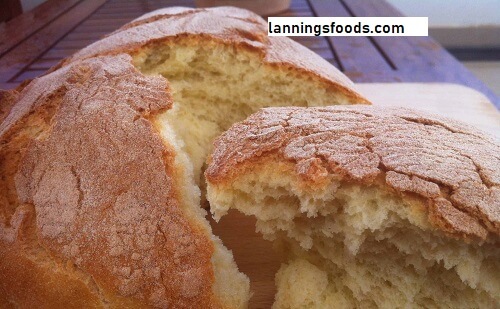Steaming Up: The Art and Science of Leavening in Baking:
Rising Recipes:
Baking Rising Recipes is fundamentally both art and science. While arguably the most fundamental aspect that undeniably destroys or saves baked products is, in a word, leavening. What are leavening agents? Well, leavening agents are the substances responsible for helping dough and batter to rise. And they do this by producing gas, thus giving to breads, cakes, and pastries a light, airy texture.
The rising recipes are diversified, and I feel it is the day to venture into their science. In this article, we dig deeper into the mastery of leavening in baking.

Understanding Leavening Agents:
Rising Recipes:
Leavening agents can be categorized into three types: biological, chemical, and physical. The classification differs for each type in the production process of those little gas bubbles involved in the rising of dough or batter.
Biological Leavening : This process uses the activity of living organisms, such as yeast. They ferment sugars in doughs and release carbon dioxide gas. The best-known form is that of yeast, commonly used in bread, rolls, and virtually everything that contains yeast leaven.
Chemical Leavening: Baking powder and baking soda are the leavening agents that interact with the acidic particles in dough or batter to generate carbon dioxide. It is typical for quick bread, cakes, or cookies.
Physical Leavening: The mechanical aeration of dough or batter involves a creaming butter and sugar or beating egg whites. This is the most typical form of mixing that includes other leavening agents.
1. Classic Yeast Bread:
Rising Recipes:
Every culture needs something alongside this basic bread. Yesterdays bread that’s been its hallmark-it uses biological leavening to get it light and soft. Here’s a basic recipe for the classic yeast bread.
Ingredients:
- 4 cups all-purpose flour
- 1 packet (2 ¼ teaspoons) active dry yeast
- 1 ½ cups warm water (110°F/43°C)
- 2 tablespoons sugar
- 2 tablespoons olive oil
- 1 teaspoon salt
Instructions:
Dissolve Yeast: Mix sugar with warm water. Sprinkle on top the yeast and let sit for about 5-10 minutes, till frothy.
Make Dough: Sieve flour along with salt in a big bowl. Add the mixture while giving a drizzle of olive oil-mixing all to combine into dough.
Dough to floured surface, remove. Knead for 8-10 minutes or until it becomes smooth and elastic
Using knead dough; smear lightly in a greased bowl. Grease a cloth, cover, and let it rise in a warm place for 1 to 2 hours, or till it is doubled in size.
Shape and Bake: Punch down the dough. Shape into loaf shape, place in greased loaf pan. Let it rise again for 30-45 minutes. Bake at 375°F or 190°C. Bake 25-30 min or until golden brown and hollow-sounding when tapped.

2. Fluffy Pancakes:
Rising Recipes:
Fluffy pancakes rank top among the favorite recipes that go through breakfast as they depend on chemical leavening to give them a puffed-up texture. Here is how you can easily make really fluffy pancakes:
Ingredients:
- 1 ½ cups all-purpose flour
- 2 tablespoons sugar
- 2 teaspoons baking powder
- ½ teaspoon baking soda
- ¼ teaspoon salt
- 1 ¼ cups buttermilk
- 1 large egg
- 3 tablespoons melted butter
Instructions:
- Dry Ingredients. In a large bowl, whisk all-purpose flour, sugar, baking powder, baking soda, and salt.
- Wet Ingredients: Combine in another bowl all the buttermilk, egg and melted butter.
- Combining Wet and Dry ingredients. Lumpy and Batter which has a light consistency
Cooking:
Medium heat
Heat a non-stick skillet or griddle. Fill the skillet with 1/4 cup of the batter for each pancake. When bubbles appear on the surface, when edges seem set, turn over and cook until golden brown on the bottom
3. Light and Airy Sponge Cake:
Rising Recipes:
Sponge cakes are a simple product, where the principle leavening agent is physical and takes place by the entrapment of air within the batter; baking powder also plays a minor role. This is a light sponge cake recipe.
Ingredients:
Rising Recipes:
- 1 cup all purpose flour
- 1 cup granulated sugar
- 4 large eggs
- 1 teaspoon vanilla extract
- 1 teaspoon baking powder
- ¼ teaspoon salt
Instructions:
Preheat Oven: Preheat oven at 350°F or 175°C. Grease the 8-inch round cake pan.
Beat Eggs: Beat the eggs with sugar in a large bowl till creamy and pale.
Add Dry Ingredients: Sieve flour, baking powder, and salt in another bowl and fold lightly into the egg mixture without deflating the batter.
Biscuits Bake: Pour the batter in pan and ready for baking. Bake at 400°F for 25-30 minutes, or when inserted with a toothpick down through the center, it comes clean. Cool and serve.
4. Quick Biscuits:
Rising Recipes:
This depends its leavening agent on baking powder, making it a tender, flaky biscuit. Here is a great biscuit recipe:
Ingredients:

- 2 cups all-purpose flour
- 1 tablespoon baking powder
- ½ teaspoon baking soda
- 1 teaspoon salt
- 6 tablespoons cold unsalted butter, cut into wee pieces
- 1 cup buttermilk
Instructions:
Rising Recipes:
Dry Ingredients Whisk together in a big bowl the flour, baking powder, baking soda, and salt.
Add cold butter to flour mixture; with your pastry cutter or your fingertips, cut that butter into the flour until coarse crumbs.
Add Buttermilk: fold and stir the buttermilk into the flour mixture just until combined. Do not overmix.
Shape and Bake: Turn the dough onto a floured surface. Roll the dough out to about 1 inch thickness. Using a biscuit cutter, cut biscuits. Put biscuits on a baking sheet and bake at 425°F (220°C) for 12 to 15 minutes or until biscuits begin to golden brown.